Because I am a helpless and impossibly hopeless collector of antiques, I fell in love with this style of ceramics and began to develop a collection to use it as subject matter in my oil paintings. It is quite fun and challenging to paint because of the raised beading called moriage (pronounced mor-ee-ah-gee, as in gee-whiz). It is applied to the surface of the Nippon and Noritake ceramic ware with a thick mixture of clay and water and is called slip.
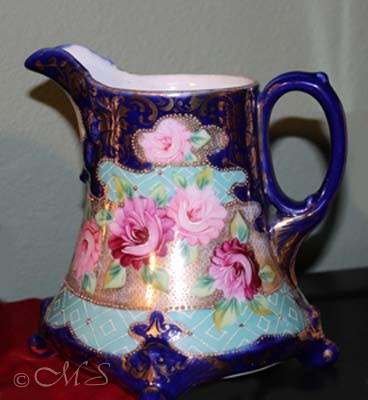
This splendid Nippon pitcher, which I have painted several times over the years, illustrates the moriage used as decoration in the white square-within-a-square pattern and also on the gold leaf border. If you were to run your fingers across the surface, you would be able to feel the small dots or beads of texture. One of beauties of oil painting is the ability to actually get this 3D effect.
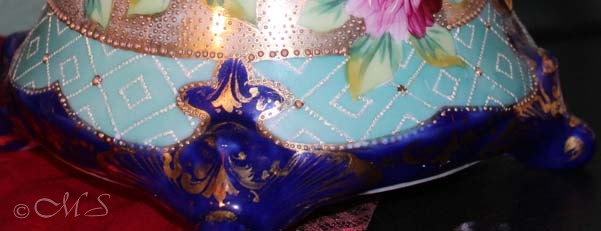
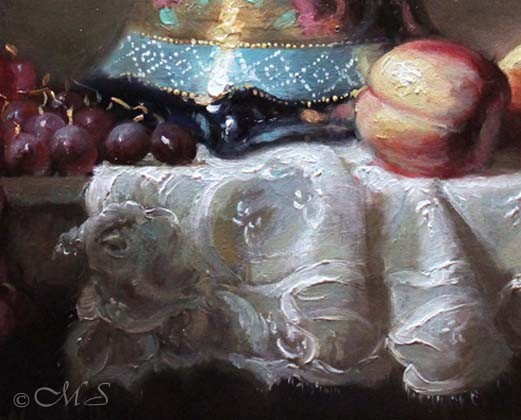
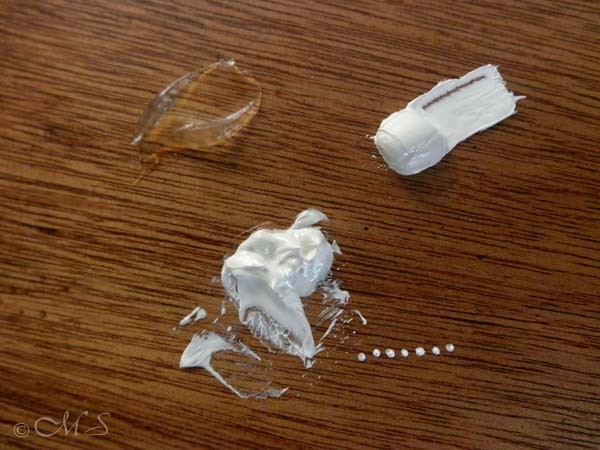
Upper left shows fumed silica with linseed
Upper right shows lead white from tube
The consistency of the oil paint is critically important here. As you can see the paint has lots of fluffy texture. The fumed silica helps the oil paint stay where you put it and will not flow out at all, which is perfect for this type of application.
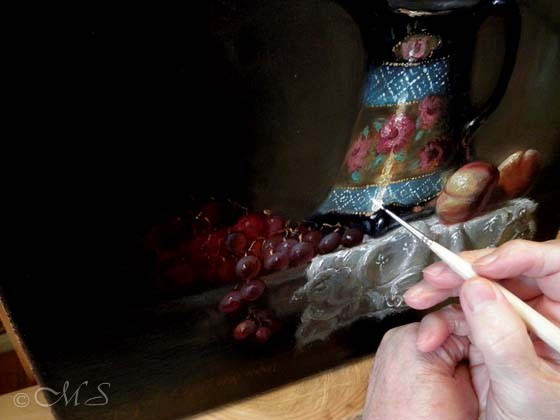
How To Steady Your Oil Painting Hand
A good technique to practice is to lay one hand on top of the other as I have done here. Brace your lower hand on the surface of your easel and place your painting hand solidly atop. This prevents shaking and gives good support to the brush as it touches the surface of the canvas. Generally, I use much larger brushes for other applications of brushstrokes, but for this type of detail in my oil painting, I find it is best to go with a small size. A signature brush works perfectly. Do you have a different technique? Please leave a comment and describe your process.

Hi Margret,
We are now Oregon residents. Richard and I recently moved to our Bible Students Retirement Center in Fairview, Oregon which we are enjoying.
While I moved most of my art supplies, I do remember discarding, I think, a grey powdery can labeled “silica’, or ‘fumed silica’ from Doak.
The sample you showed was transparent and quite thick. Is this something you produce or purchased?
I thoroughly enjoyed Paul Allen’s art exhibit at the Portland Art Museum. What an eclectic assembly of paintings!
I have not contacted any Art Group or League. Any suggestions?
Much continued success. and thanks for sharing Margret.
shirley
Hi Shirley, So glad to hear you are now Oregon residents. I hope you will be happy in your new home. Sadly, I have not made it to the Paul Allen Exhibit yet. Not even sure if it is still showing. I don’t really know of any art groups in your area, with the exception that I have heard there are many active artists in the Gresham area. Maybe you could contact the city to inquire. As to the fumed silica, I have both made my own and used the purchased one. There is very extensive information on my blog showing images and how to handle the product in the dry state. You might find it informative. Just type in fumed silica in the search bar. Feel free to contact me if you have any further questions.
All the best painting. Margret